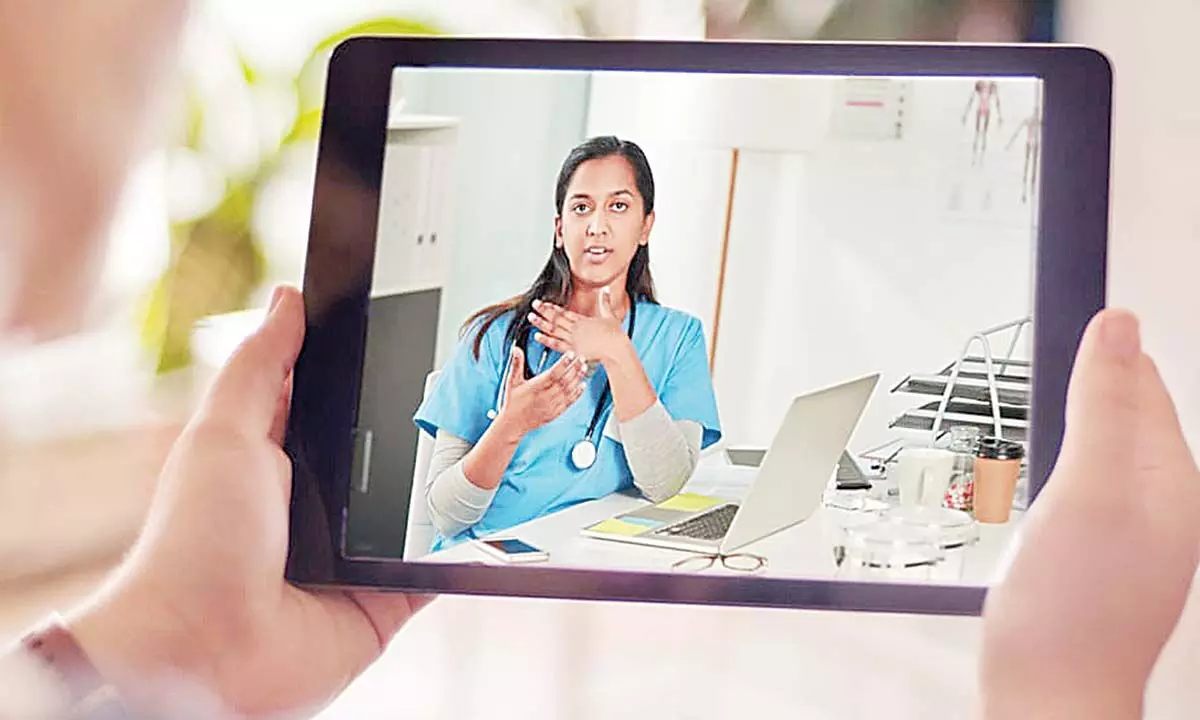How telemedicine is bridging gaps in healthcare delivery
Govt programs and other healthcare providers are extending the healthcare ecosystem in rural and underserved communities by capitalizing on the momentum created by telemedicine
image for illustrative purpose

The global Covid-19 pandemic has fuelled a massive increase in telemedicine as patients and clinicians seek safe access to healthcare delivery via a variety of channels. The arrival of the pandemic has significantly increased the Indian telemedicine market. Teleconsultations, e-clinics, and remote monitoring are now trusted and preferred by patients and healthcare professionals.
The scope of the healthcare sector has changed as a result of technological advancements such as telemedicine and e-clinic platforms. Although e-clinics are a relatively new concept in India, they were created to increase health outreach in remote and difficult-to-reach areas of the country and provide primary health care services by connecting qualified allopathic doctors in cities with local practitioners and health workers who see patients using video conferencing technologies and cost-effective methods.
The impact of telemedicine in the rural sector
India is not lagging behind in adopting telemedicine, which is making waves in the global industry. Furthermore, telemedicine is becoming a tool for closing the access to healthcare gap in India's rural and urban areas. Given the promise of digital health for efficient healthcare delivery, there is an urgent need to integrate it in the nation's most remote areas. Telehealth, in conjunction with the government of India's telemedicine standards, has the potential to improve healthcare in rural areas. The market is rapidly expanding, which is assisting in the transformation of the healthcare industry from a provider-centric, volume-based paradigm to a patient-centric and value-based paradigm.
The need to deploy technology in rural areas where healthcare is scarce is becoming increasingly important as time passes. Given its current state of development, telemedicine faces numerous challenges. However, the benefits of improved broadband and telecommunications infrastructure are compelling enough for rural communities around the world to implement and adopt them. Telemedicine seeks to help healthcare facilities such as hospitals, clinics, and health centers improve patient access to care. It enables us to assist and provide healthcare services. Better monitoring and easier access to healthcare, made possible by technology, improve patient-doctor communication. It also employs electronic equipment and technology to communicate data and provide clinical assistance to patients.
Telemedicine implementation challenges
Although telemedicine has the potential to revitalize rural hospitals, challenges remain. People in other areas revert to their old habits, expecting to interact with healthcare systems in the same way they always have. Because of the established nature of their relationship, patients would prefer that their primary care physician participate in telemedicine. Some healthcare practitioners may find it difficult to learn new consultation techniques and may require advanced training to use cutting-edge technologies.
The primary barriers to telemedicine expansion in rural areas are fragmented healthcare and limited resources. The lack of primary healthcare services in India's rural areas influences the use of telehealth in these areas. They are unable to go digital because the public and experts are unaware of and reject new technologies. Due to difficulties such as patient misunderstanding of symptoms, physician misreading of symptoms, misdiagnosis, app usage, familiarity issues by technologically challenged people, cyber risks, and so on, rural populations continue to prefer over-the-counter doctor consultation and treatment. To overcome these barriers, we must spread the word that telemedicine is currently the safer and faster option; teach patients step-by-step how to use it; reach out to people with weak social networks and low technological literacy; lower the cost barriers to accessing telemedicine, and increase network reimbursement coverage for clinicians.
Solving healthcare challenges in rural areas
Telemedicine programs have benefited rural populations over time. Although there are numerous advantages of using telemedicine in all settings, telemedicine programs are especially beneficial for providers addressing a wide range of issues confronting rural residents.
As technology progressed, various e-clinic platforms emerged as a trend for providing medical care on par with high-quality and cost-effective models. Through the telemedicine clinic platform, online telemedicine clinics connect rural patients with specialized doctors at a low cost. Furthermore, they contribute to quality consultations through video conferencing and telemedicine by meeting a wide range of medical needs. As a result, the e-clinic has accelerated rural telemedicine healthcare services.
As a result, rural telemedicine is in higher demand. Furthermore, it is becoming clear that government programs and other healthcare providers are extending the healthcare ecosystem in rural and underserved communities by capitalizing on the momentum created by telemedicine. This introduces people to the benefits and convenience of telemedicine, expanding its use in remote locations and improving overall population health. Therefore, telemedicine helps to deliver healthcare throughout the rural ecosystem, making India's population healthier.
(The author is CEO and Co-Founder, Tattvan E-Clinics)

